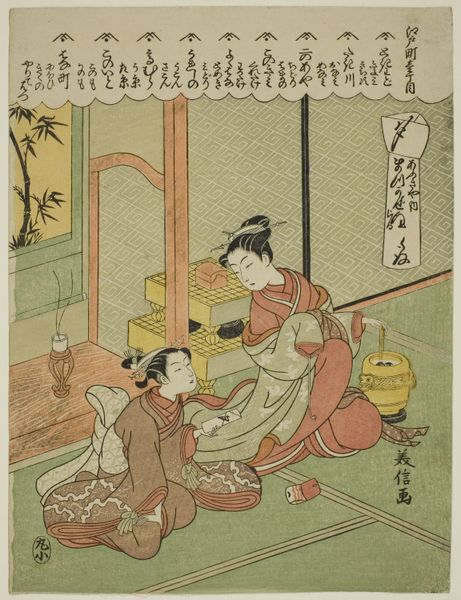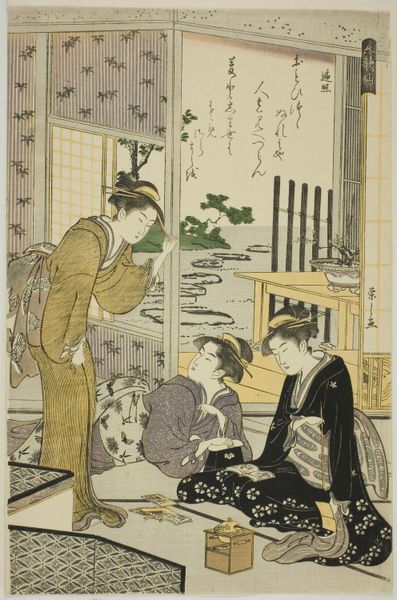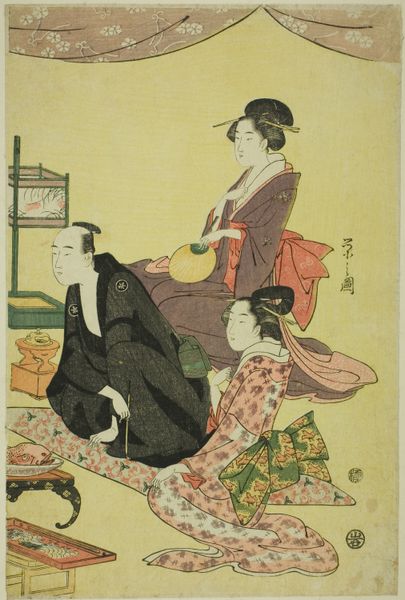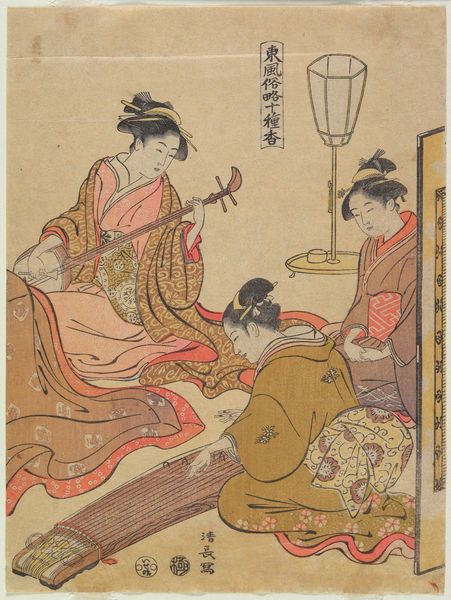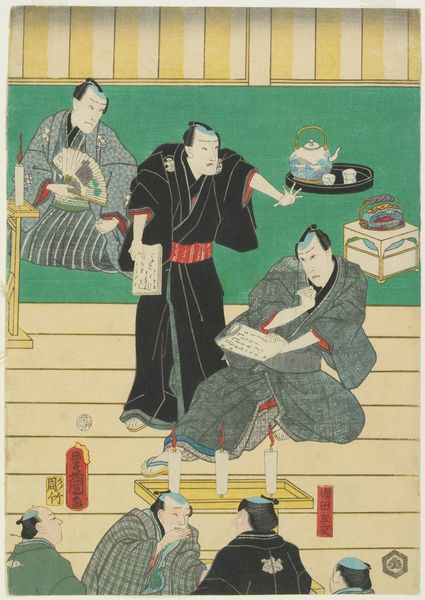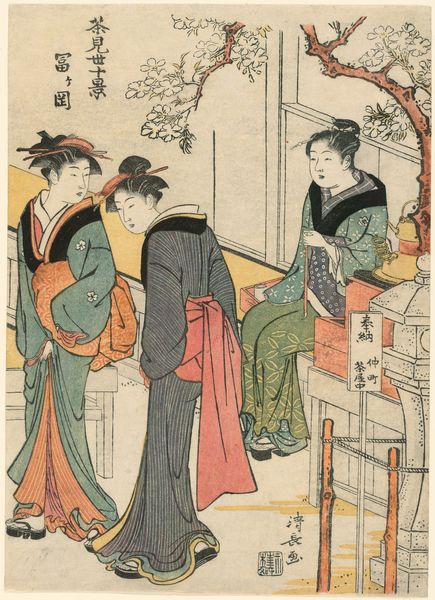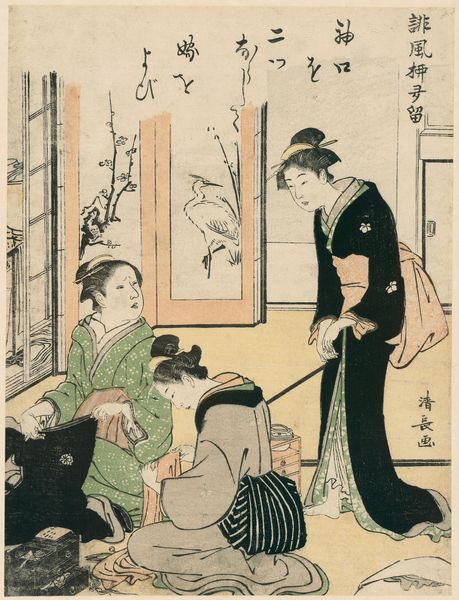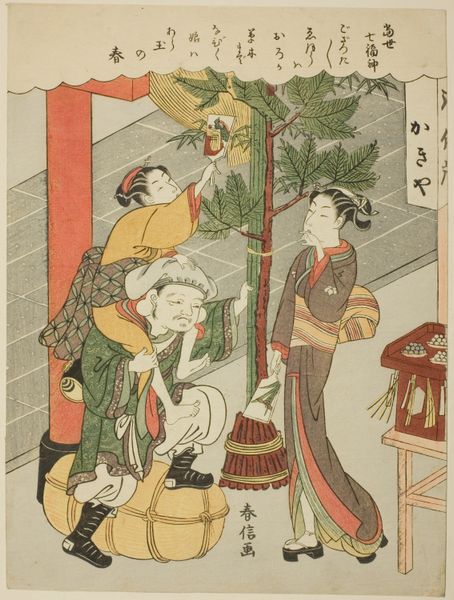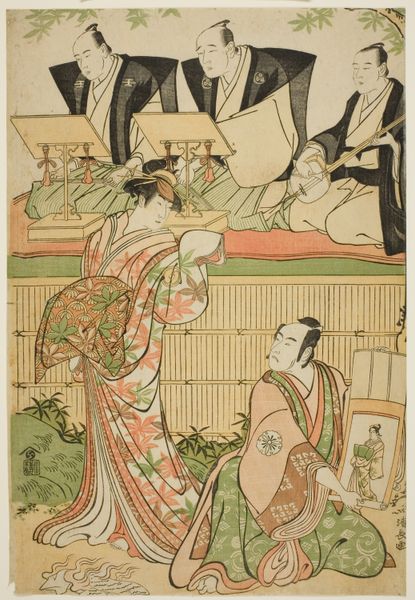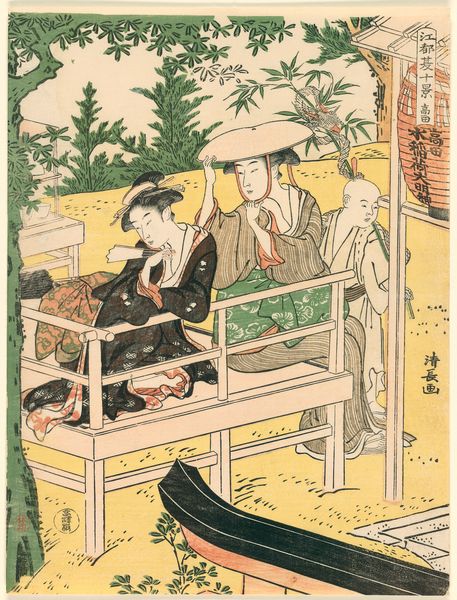
Tree Peony: Chozan of Chojiya (Chojiya uchi Chozan, Kao), from the series "Parodies of Floating-world Beauties as Flowers (Ukiyo bijin hana mitate)" c. 1769
0:00
0:00
print, woodblock-print
# print
#
asian-art
#
ukiyo-e
#
figuration
#
woodblock-print
#
genre-painting
Dimensions: 27.5 × 20.2 cm (10 3/4 × 8 in.)
Copyright: Public Domain
Curator: This work, titled "Tree Peony: Chozan of Chojiya," comes to us from Suzuki Harunobu, created around 1769. It’s a woodblock print, a technique particularly refined during the Ukiyo-e period. Editor: Immediately, I’m drawn to the sense of quiet intimacy. The subdued colors and the placement of the figures create a feeling of being invited into a private moment. Curator: Indeed. Harunobu excelled at depicting everyday life with a delicate touch, especially the world of courtesans and geishas. The series title is “Parodies of Floating-world Beauties as Flowers,” hinting at the symbolic association between these women and specific blooms. Here, Chozan is linked with the tree peony, representing wealth and beauty. Editor: And isn’t that symbolism reinforced by the way the composition focuses on her costume? The patterns and luxurious fabrics seem very important to conveying the theme. Plus, is it just me or do all three of the women appear somber? Curator: Well, there could be multiple interpretations there. The subdued emotion might align with the melancholic undercurrent that often runs through Ukiyo-e prints, acknowledging the fleeting nature of beauty and pleasure. There’s always that “mono no aware,” that awareness of impermanence, at play. Editor: Perhaps. Or maybe it’s just the way women were expected to carry themselves publicly? Given what we know about societal expectations at the time, this feels significant, the emphasis on external appearance while suppressing their inner feelings. And do the characters in the top left corner help reveal some subtext here? Curator: Quite possibly. Japanese prints often incorporated calligraphy as an integral part of the composition. It will require further research to clarify the nuances. I also notice the careful detailing, especially in rendering of the pine trees in the background. Each needle is meticulously etched. This wasn’t just mass production; it was an artisanal craft. Editor: Looking closer, the placement of the lantern is so crucial. It casts a light, but also creates a division. Each area—the outdoor space, the main figures, the figure off to the side—seems purposefully staged, creating zones of different types of interaction. I can see why people are still moved by such an image today. Curator: I find myself also thinking of the woman as the tree peony... I’m struck again by how the art continues to evolve in meaning, just as the symbols of culture persist over time. Editor: Indeed, reflecting on the power of historical context lets us really appreciate how political art truly is, revealing its enduring connection to human life through symbols and society.
Comments
No comments
Be the first to comment and join the conversation on the ultimate creative platform.

